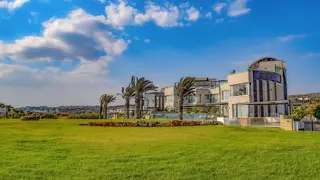How Green Building Standards Boost Property Value in Bhubaneswar: Eco-Friendly Features and Market Impact
 Bhubaneswar, Odisha’s capital, is quickly becoming a hub for eco-conscious real estate. As urban development grows, buyers and renters are focusing on properties that use sustainable solutions. This shift isn’t just about ethics—it’s a smart move to unlock higher resale values and rental yields. Here’s how green building standards are changing Bhubaneswar’s property market.
Bhubaneswar, Odisha’s capital, is quickly becoming a hub for eco-conscious real estate. As urban development grows, buyers and renters are focusing on properties that use sustainable solutions. This shift isn’t just about ethics—it’s a smart move to unlock higher resale values and rental yields. Here’s how green building standards are changing Bhubaneswar’s property market.
The Rise of Eco-Friendly Real Estate in Bhubaneswar
Recent actions, like the National Green Tribunal (NGT) stopping the construction of 12 residential towers in Ghatikia for breaking environmental rules, show how serious sustainable development is. Following initiatives like stormwater drain projects and waste management plans isn’t optional—it’s mandatory. The Bhubaneswar Development Authority (BDA) enforces strict building codes, requiring features like rainwater harvesting systems, compound walls with open staircases for natural ventilation, and energy-efficient layouts. These rules make sure projects align with environmental goals.
Key Green Building Features Driving Demand
1. Solar Power Integration
- Grid-Connected Systems: Properties with solar panels see lower electricity costs and fair billing.
- Higher Resale Appeal: Homes with IoT-enabled features and solar panels often sell for more due to lower operating costs.
2. Rainwater Harvesting
- Legal Requirements: Bida requires installation in approved building plans, especially in agricultural zones.
- Cost Savings: Systems collect and store rainwater for irrigation and non-potable uses, cutting water bills.
3. Green Spaces and Landscape Plans
- Regulatory Compliance: Projects over 500 sq. m must submit landscape plans with greenery and pathways.
- Aesthetic Value: Parks, gardens, and tree-lined verandahs boost visual appeal and provide natural cooling.
4. Water Conservation Systems
- Greywater Recycling: Treated wastewater used for flushing toilets reduces freshwater use.
- Drought-Resistant Landscaping: Low-water-use plants cut irrigation needs.
Regulatory Support and Compliance Challenges
| Regulation | Impact on Property Value |
|---|---|
| Mandatory solar installations | Increase by 10-15% in prime areas |
| Stormwater drain compliance | Prevents legal penalties and occupancy delays |
| Landscaping mandates | Enhances community appeal |
| Waste management plans | Reduces municipal fines and operational costs |
The BDA’s color-coded zoning policies shape developer behavior. For example:
- Green Zones: Strict conservation areas with limited development but high ecological value.
- Residential Zones: Balance between density and green spaces to keep air quality good.
However, compliance isn’t easy. Developers must navigate complex approvals, including certifications from the State Level Environment Impact Assessment Authority (SEIAA). Delays often occur when builders miss necessary clearances, as seen in the halted Ghatikia project.
Why Renters and Buyers Demand Eco-Friendly Properties
1. Lower Operating Costs
- Solar-powered homes reduce electricity bills and give long-term financial benefits.
- Water-saving features cut utility expenses, making properties more attractive.
2. Long-Term Appreciation
- Properties in mixed-use zones with green amenities often see faster appreciation due to premium pricing.
- BDA-approved projects with full compliance carry higher trust value.
3. Rental Yields
- Corporate tenants increasingly prioritize sustainability when leasing spaces, driving demand for certified green offices.
- Eco-friendly features become differentiators in saturated high-rise markets.
Future Trends and Investment Opportunities
As Bhubaneswar’s master plans unfold, investors should focus on:
- Undervalued Green Zones: Agricultural lands turning into eco-friendly gated communities.
- LEED-certified Commercial Spaces: Rising demand for energy-efficient offices.
- Smart Infrastructure: Properties with IoT-enabled energy management systems.
Conclusion: A Sustainable Path to Profitability
Bhubaneswar’s green building standards aren’t just rules—they’re market drivers. Properties that use solar power, water conservation, and sustainable landscaping don’t just meet legal norms; they capture higher valuations and attract discerning buyers. For investors, aligning with the BDA’s environmental vision offers both ecological benefits and financial rewards in a competitive market.
Sources: Bhubaneswar Development Authority regulations, NGT environmental compliance cases, and real estate market trends in Odisha.